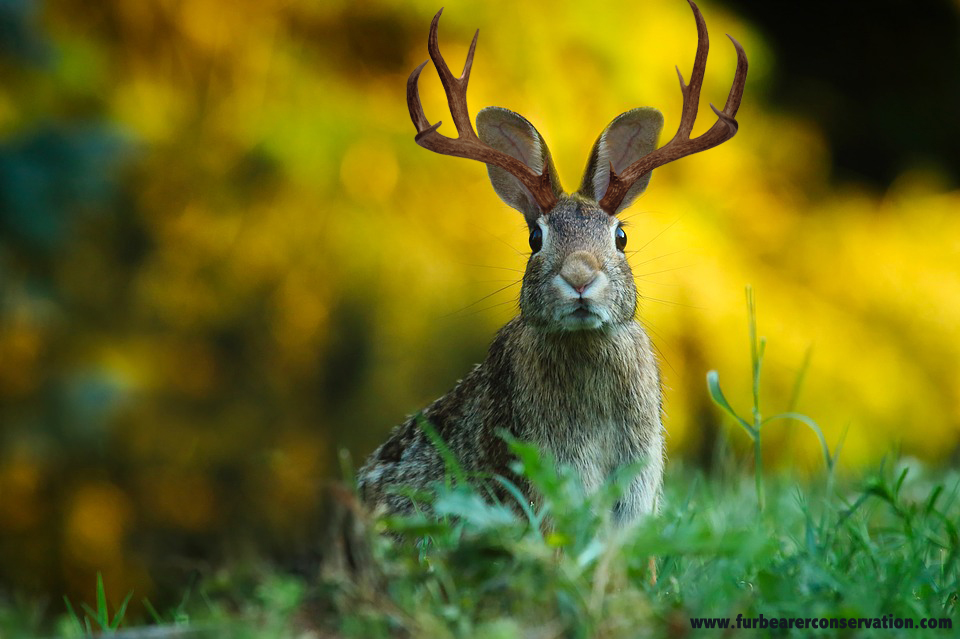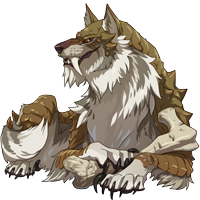

Lepus
(#15548226)
horned hare, winged chimera of mischief
Click or tap to view this dragon in Predict Morphology.
Energy: 50/50

Expand the dragon details section.
Collapse the dragon details section.
Personal Style
Apparel










Skin
Scene

Measurements
Length
3.96 m
Wingspan
3.57 m
Weight
242.8 kg
Genetics
Sand
Bar
Bar
Swamp
Toxin
Toxin
Spring
Thylacine
Thylacine
Hatchday
Breed
Eye Type
Level 10 Tundra
EXP: 10753 / 27676




STR
45
AGI
12
DEF
11
QCK
21
INT
11
VIT
12
MND
11
Biography

The Horned Hare
Lepus cornutus, Lepus antilocapra, Al-Mi'raj, Rasselbock, Wolpertinger, Dilldap, Raurakl, Jackalope
In folklore, the horned hare is a type of hare or rabbit that in previous centuries was believed to exist, but is now considered to be fictional. Texts such as Historiae Naturalis de Quadrupetibus Libri by Joannes Jonstonus in the 17th century, and illustrations in Ajā'ib al-makhlūqāt wa gharā'ib al-mawjūdāt by Zakariya al-Qazwini in the 13th century, and Animalia Qvadrvpedia et Reptilia by Joris Hoefnagel in the 16th century included the horned hare. These early texts described and illustrated the hybrids as though they were real creatures, but by the end of the 18th century scientists generally rejected the idea of horned hares as a biological species. Researchers suggest that at these tales of horned hares were inspired by sightings of rabbits infected with the Shope papilloma virus. It causes horn- and antler-like tumors to grow in various places on a rabbit's head and body.
Stories or descriptions of animal hybrids have appeared in many cultures worldwide, in Europe, Africa, Asia, and North and Central America.
In Persian legend the al-mi'raj is a mythical beast said to live on a mysterious island called Jazirah al-Tennyn (Sea-Serpent Island) within the confines of the Indian Ocean. It takes the form of rabbit with a unicorn-like horn, or horns. According to legend, the beast was a gift given to Alexander the Great from the inhabitants of the island after he killed a large dragon that had been eating the livestock of the people there.
In German folklore, the rasselbock (or rarely raspelbock) is a mythological animal, often depicted in such locations as hunting lodges. It has the head and body of a rabbit, and the antlers of a roe deer. The female counterpart of the rasselbock is the rasselgeiß, which have smaller antlers, and the young animals are called waldrasslinge. Some rasselbocks have been known to be shown with canine teeth, unlike other hares and rabbits. Most alleged sightings are reported in the Thuringian Forest and in the Mark Brandenburg, but also in the Harz Mountains. Others are seen near Schwarzatal, the Schmücke and Auerhahn, a forest town near Stützerbach and Ilmenau. Some people claim to find footprints in the snow. Many people say that the rasselbock is very shy and mostly stays hidden, but is dangerous due to its antlers. People often use the rasselbock in conversation to try to humiliate an older or more experienced person by rhetorically asking if they would like to go catch the creatures.
Also in Germany is the wolpertinger (also called wolperdinger or woiperdinger), an animal said to inhabit the alpine forests of Bavaria and Baden-Württemberg in southern Germany. The most widespread description portrays the Wolpertinger as having the head of a hare, the body of a squirrel, the antlers of a deer, and the wings and occasionally the legs of a pheasant. The Hessian dilldap and Austrian raurackl are nearly identical to the wolpertinger.
The jackalope is the horned hare of North American folklore, described as a jackrabbit with antelope horns, and is a portmanteau of the words jackrabbit and antelope. The jackalope is subject to many outlandish and largely tongue-in-cheek claims embedded in the legends. Jackalopes are said to be so dangerous that hunters are advised to wear stovepipes on their legs to keep from being gored. Stores in sell jackalope milk, and newspapers write that milking a jackalope is known to be fraught with risk. One of the ways to catch a jackalope is to entice it with whiskey, the jackalope's beverage of choice. The jackalope can imitate the human voice: during the days of the Old West, when cowboys gathered by the campfires singing at night, jackalopes could be heard mimicking their voices or singing along, usually as a tenor. It is said that jackalopes only breed during lightning flashes and that their antlers make the act difficult despite the hare's reputation for fertility.
In Central America, mythological references to a horned rabbit creature can be found in Huichol legends. The Huichol oral tradition has passed down tales of a horned rabbit and of the deer getting horns from the rabbit. A similar story can be found in Cherokee oral tradition.
The rabbit and deer were paired, though not combined as a hybrid, as day signs in the calendar of the Mesoamerican period of the Aztecs, as twins, brothers, and even the sun and moon.
- - - - - -


Click or tap a food type to individually feed this dragon only. The other dragons in your lair will not have their energy replenished.
This dragon doesn't eat Insects.
This dragon doesn't eat Meat.
This dragon doesn't eat Seafood.
Feed this dragon Plants.
Exalting Lepus to the service of the Lightweaver will remove them from your lair forever. They will leave behind a small sum of riches that they have accumulated. This action is irreversible.
Do you wish to continue?
- Names must be longer than 2 characters.
- Names must be no longer than 16 characters.
- Names can only contain letters.
- Names must be no longer than 16 characters.
- Names can only contain letters.












